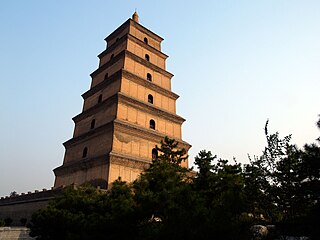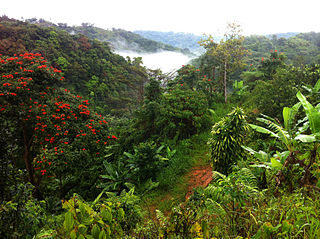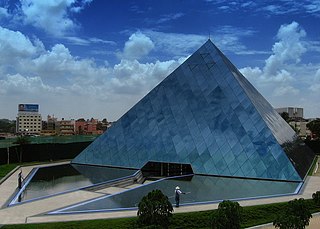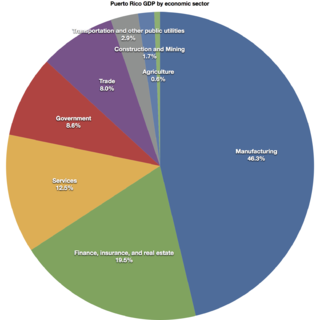
The economy of Canada is a highly developed mixed economy with 10th largest GDP by nominal and 16th largest GDP by PPP in the world. As with other developed nations, the country's economy is dominated by the service industry which employs about three quarters of Canadians. Canada has the fourth highest total estimated value of natural resources, valued at US$33.2 trillion in 2016. It has the world's third largest proven petroleum reserves and is the fourth largest exporter of petroleum. It is also the fourth largest exporter of natural gas. Canada is considered an "energy superpower" due to its abundant natural resources and small population.

The Dominican Republic has the 8th largest economy in Latin America, and is the largest in the Caribbean and Central America region. It is an upper middle-income developing country primarily dependent on mining, agriculture, trade, and services. The country is the site of the single largest gold mine in Latin America, the Pueblo Viejo mine. Although the service sector has recently overtaken agriculture as the leading employer of Dominicans, agriculture remains the most important sector in terms of domestic consumption and is in second place in terms of export earnings. Tourism accounts for more than $1 billion in annual earnings. free-trade zone earnings and tourism are the fastest-growing export sectors. According to a 1999 International Monetary Fund report, remittances from Dominican Americans, are estimated to be about $1.5 billion per year. Most of these funds are used to cover basic household needs such as shelter, food, clothing, health care and education. Secondarily, remittances have financed small businesses and other productive activities.

Jamaica has natural resources, primarily bauxite, and an ideal climate conducive to agriculture and also tourism. The discovery of bauxite in the 1940s and the subsequent establishment of the bauxite-alumina industry shifted Jamaica's economy from sugar and bananas. By the 1970s, Jamaica had emerged as a world leader in export of these minerals as foreign investment increased.

Lesotho is geographically surrounded by South Africa and economically integrated with it as well. The economy of Lesotho is based on agriculture, livestock, manufacturing, mining, and depends heavily on inflows of workers’ remittances and receipts from the Southern African Customs Union (SACU). The majority of households subsist on farming. The formal sector employment consist of mainly the female workers in the apparel sector, the male migrant labor, primarily miners in South Africa for 3 to 9 months and employment in the Government of Lesotho (GOL). The western lowlands form the main agricultural zone. Almost 50% of the population earn income through informal crop cultivation or animal husbandry with nearly two-thirds of the country's income coming from the agricultural sector.

The economy of Malaysia is the 4th largest in Southeast Asia, after Indonesia, Thailand and Singapore and is the 35th largest economy in the world. Malaysian labour productivity is significantly higher than neighbouring Thailand, Indonesia, Philippines or Vietnam due to a high density of knowledge-based industries and adoption of cutting edge technology for manufacturing and digital economy. According to the Global Competitiveness Report 2018, the Malaysian economy is the 25th most competitive country in the world in the period of 2018–19.

The economy of Mauritius refers to the economic activity of the island nation of Mauritius.
This territory uses US currency and the fiscal year is 1 October - 30 September.
The economy of Saint Kitts and Nevis has traditionally depended on the growing and processing of sugar cane; decreasing world prices have hurt the industry in recent years. Tourism, export-oriented manufacturing, and offshore banking activity have assumed larger roles. Most food is imported. The government has undertaken a program designed to revitalize the faltering sugar sector. It is also working to improve revenue collection in order to better fund social programs. In 1997, some leaders in Nevis were urging separation from Saint Kitts on the basis that Nevis was paying far more in taxes than it was receiving in government services, but the vote on cessation failed in August 1998. In late September 1998, Hurricane Georges caused approximately $445 million in damages and limited GDP growth for the year.

Shaanxi is a landlocked province in Northwest China. It lies in central China, bordering the provinces of Shanxi, Henan (E), Hubei (SE), Chongqing (S), Sichuan (SW), Gansu (W), Ningxia (NW), and Inner Mongolia (N).

Jayuya is a municipality of Puerto Rico (U.S.) located in the mountainous center region of the island, north of Ponce; east of Utuado; and west of Ciales. Jayuya is spread over 10 wards and Jayuya Pueblo. It is the principal city of the Jayuya Micropolitan Statistical Area.
Operation Bootstrap is the name given to a series of projects which transformed the economy of Puerto Rico into an industrial and developed one. The federal government of the United States together with what is known today as the Puerto Rico Industrial Development Company set forth a series of ambitious economical projects that evolved Puerto Rico into an industrial high-income territory. Bootstrap is still considered the economic model of Puerto Rico as the island has still not been able to evolve into a knowledge economy.

The economy of India is a developing mixed economy. It is the world's seventh-largest economy by nominal GDP and the third-largest by purchasing power parity (PPP). The country ranks 139th in per capita GDP (nominal) and 119th in per capita GDP (PPP) as of 2018. After the 1991 economic liberalisation, India achieved 6-7% average GDP growth annually. Since 2014, India's economy has been the world's fastest growing major economy, surpassing China.

The economy of New York City encompasses the largest municipal and regional economy in the United States. Anchored by Wall Street in Lower Manhattan, New York City has been characterized as the world's premier financial center. It is home to the New York Stock Exchange and NASDAQ, the world's two largest stock exchanges by both market capitalization and trading activity. In 2012, the New York metropolitan area generated a gross metropolitan product (GMP) of over US$1.33 trillion with a population of 20.3 million people. The Combined Statistical Area produced a GMP of over US$1.55 trillion. Both are ranked first nationally by a wide margin and being roughly equivalent to the GDP of South Korea. The city's economy accounts for most of the economic activity in both the states of New York and New Jersey.

Information Technology in India is an industry consisting of two major components: IT services and business process outsourcing (BPO). The sector has increased its contribution to India's GDP from 1.2% in 1998 to 7.7% in 2017. According to NASSCOM, the sector aggregated revenues of US$160 billion in 2017, with export revenue standing at US$99 billion and domestic revenue at US$48 billion, growing by over 13%. The United States accounts for two-thirds of India's IT services exports.

Belize has a small, essentially private enterprise economy that is based primarily on agriculture, tourism, and services. The cultivation of newly discovered oil in the town of Spanish Lookout has presented new prospects and problems for this developing nation. Belize's primary exports are citrus, sugar, and bananas. Belize's trade deficit has been growing, mostly as a result of low export prices for sugar and bananas.

The economy of the U.S. state of Oregon is made up of a number of sectors. During the 1990s and 2000s, Oregon has attempted to transition its economy from one based on natural resources to one based on a mix of manufacturing, services, and high technology.

Manufacturing in the United States is a vital sector. The United States is the world's second largest manufacturer with a record high real output in Q1 2018 of $2.00 trillion well above the 2007 peak before the Great Recession of $1.95 trillion. The U.S. manufacturing industry employed 12.35 million people in December 2016 and 12.56 million in December 2017, an increase of 207,000 or 1.7%. Though still a large part of the US economy, in Q1 2018 manufacturing contributed less to GDP then the 'Finance, insurance, real estate, rental, and leasing' sector, the 'Government' sector, or 'Professional and business services' sector.
The textile industry in India traditionally, after agriculture, is the only industry that has generated huge employment for both skilled and unskilled labour in textiles. The textile industry continues to be the second-largest employment generating sector in India. It offers direct employment to over 35 million in the country. The share of textiles in total exports was 11.04% during April–July 2010, as per the Ministry of Textiles. During 2009–2010, the Indian textile industry was pegged at US$55 billion, 64% of which services domestic demand. In 2010, there were 2,500 textile weaving factories and 4,135 textile finishing factories in all of India. According to AT Kearney’s ‘Retail Apparel Index’, India was ranked as the fourth most promising market for apparel retailers in 2009.















